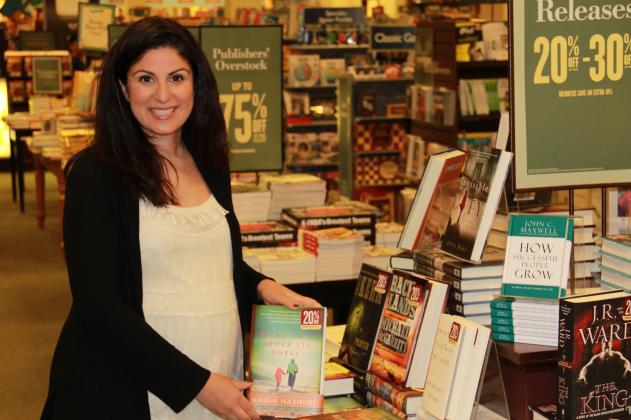Written by Nadia Hashimi, M.D.
May 23, 2014

On May 6th of this year, I walked into our local Barnes & Noble with my husband and our two children. We had to see it to believe it. The novel I’d written three years ago was sitting front and center on the “New Release” table – touchable and very real.
“Mommy, there’s your book,” my son noted casually before running off to the children’s section, his three year old sister in tow. She, my daughter, touched the cover briefly and smiled at me. She turned to follow her brother’s lead, knowing only that Mommy wrote this book for her. She does not know the story inside the book nor the story behind it. She does not know that infused in the novel are my dreams for her and the lessons I hope to teach her.
We were expecting our daughter when I began writing The Pearl That Broke Its Shell. I wanted to tell the story of the girls of Afghanistan, where my parents were born. Though the story is set in Afghanistan, in my mind it is the story of the struggles girls face in many corners of the world where so much is taken from them, so much is expected of them, and very little is given to them. The novel is about two Afghan girls growing up a century apart. Rahima, a young girl in contemporary Afghanistan, is made into a bacha posh, which literally means “dressed as a boy.” This custom, in which young girls are transformed into boys by cutting their hair and changing their clothing, allows girls to bring honor to a family without sons, to attend school or to work outside the home. When they reach puberty or marriageable age, they are transformed back into girls. In Rahima’s case, she is abruptly married off to a local warlord to become his fourth wife at only thirteen years old.
Rahima’s story is intertwined with that of Shekiba, her great-great-grandmother who was orphaned by the cholera epidemic and finds herself dressed in men’s garb and working as a guard for King Habibullah’s harem. She is privy to the inner workings of the palace and to the first winds of progress that begin to sweep across the country.
The bacha posh tradition of Afghanistan and Pakistan is a poorly tracked but historic practice. It is a pragmatic solution in a misogynistic world. The very existence of this uncommon practice speaks to the depth of gender bias found in the culture. There is a perceived superiority of a son over a daughter. I began to imagine a young bacha posh and how bittersweet it must be to taste the freedoms of boyhood in a country where girls and boys are treated so differently. I could feel her angst when those liberties were abruptly taken from her and her aspirations and her identity were brutally undone.
As I began to feel my daughter’s first fluttering movements, I became more anxious to tell the story. I wanted to use this novel to teach her to value the opportunities she would hopefully have and to nurture her self-confidence. Don’t accept the unacceptable, I wanted my daughter to know.
There are many steps between writing a story and seeing it in hardcover form at the local bookstore. I was fortunate in that I found an agent who took on the story excitedly. Within a few weeks, she had arranged a deal with William Morrow/Harper Collins. Since then, we’ve been working on fine tuning the story and preparing for publication in May 2014, almost exactly three years from when I first completed it. The best part of having the book out in the world is the feedback I get directly from readers through Goodreads, my website or Facebook. I am so moved to hear how readers connect with the story and that the characters stayed with them long after the final page.
I finished the novel shortly before my daughter, Zayla, entered this world. I dedicated the book to her because she drove me to complete this story and changed how I view the world. She’s made me more outraged at the gender injustices we see every day, whether it be the kidnapping of school girls in Nigeria, the global epidemic of child “brides,” or the college campus rapes swept under the carpet here in the United States. How can we be complacent when we know what happens to mothers, sisters, daughters? It’s my hope that this book will inspire some important conversations and contribute in some way to creating a better and more just world for all women.
Tags:
